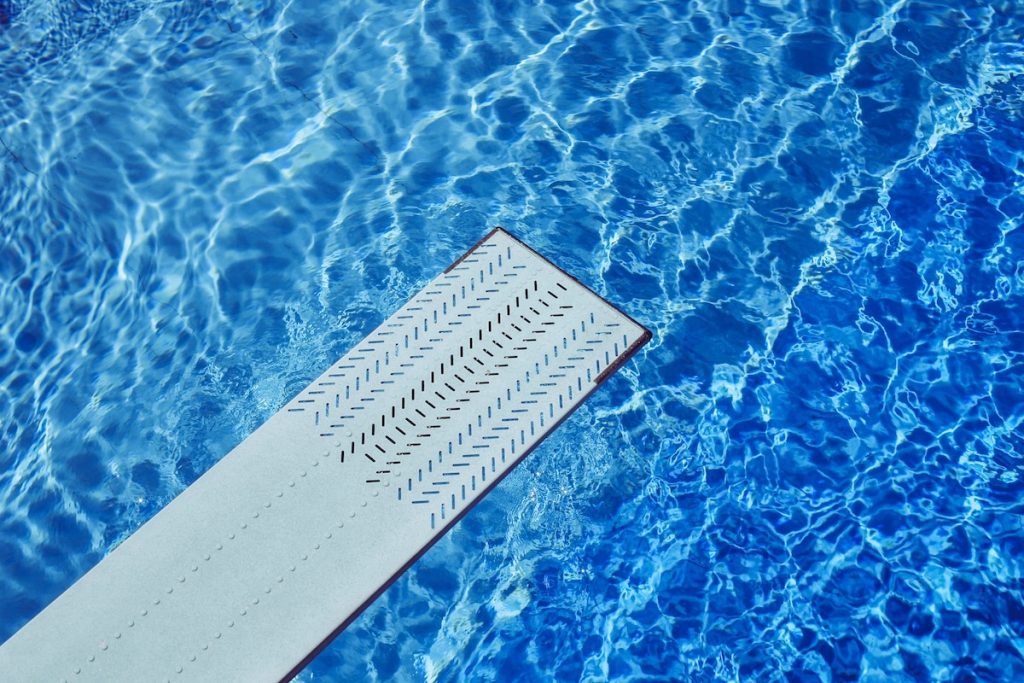A sparkling clean pool is a delightful oasis on a scorching summer day, akin to booking your dream vacation cabin in the picturesque landscapes of Colorado. But behind that crystal-clear water lies a crucial ingredient in pool maintenance – chlorine tablets. These small, powerful tablets are the unsung heroes that keep our pools safe and sanitary for swimming. In this comprehensive blog, we will explore chlorine tablets’ significance, how they work, their role in maintaining a sparkling clean pool, and the broader impact of proper pool sanitization on public health.
Why Chlorine Tablets Matter: The Basics of Pool Sanitization
Chlorine tablets are the backbone of pool sanitization, and their role cannot be overstated. When people enter the pool, they introduce contaminants like sweat, body oils, sunscreen, and even urine. These contaminants can create a breeding ground for harmful bacteria, viruses, and algae if left unchecked. Chlorine tablets are a powerful disinfectant, killing bacteria and viruses and preventing algae growth. Their role in pool maintenance is not just about aesthetics; it is crucial to ensure the water remains safe and clean for swimmers.
The Science Behind Disinfection: How Chlorine Tablets Work
The effectiveness of chlorine tablets lies in their slow-release mechanism. When placed in a floating dispenser or a skimmer, the tablets dissolve gradually, releasing chlorine into the pool water at a controlled rate. The active ingredient, chlorine, combines with water to form hypochlorous acid, a potent sanitizing agent. Hypochlorous acid disrupts microorganisms’ cell membranes, effectively killing them and preventing their reproduction.
The slow-release feature of chlorine tablets allows for consistent and continuous sanitization, ensuring the pool water remains free of harmful bacteria, viruses, and algae throughout the day.
Types of Chlorine Tablets: Stabilized vs. Unstabilized
Chlorine tablets come in two main types – stabilized and unstabilized. Stabilized chlorine tablets contain cyanuric acid, which acts as a UV stabilizer, protecting the chlorine from degradation due to sunlight exposure. Unstabilized chlorine tablets do not contain cyanuric acid and are more suitable for indoor pools or pools with appropriate sunshades.
The choice between stabilized and unstabilized chlorine tablets depends on the pool’s exposure to sunlight and the need for cyanuric acid to prolong chlorine’s effectiveness. Pool owners must consider these factors to ensure that chlorine remains effective in preventing bacteria and algae growth.
Chlorine Tablet Dosage: Striking the Right Balance
Determining the proper chlorine tablet dosage is essential to maintain a safe and clean pool. Too little chlorine can lead to ineffective sanitization, allowing harmful microorganisms to thrive. On the other hand, excessive chlorine levels can cause skin and eye irritation for swimmers and even damage pool equipment.
Calculating the correct dosage involves considering pool size, water temperature, bather load, and weather conditions. Pool owners can use pool testing kits to monitor chlorine levels and adjust the dosage accordingly. Regular testing and adjustments ensure the pool maintains the optimal chlorine level for safe swimming.
Chlorine Tablets and pH Balance: Finding Pool Chemistry Harmony
Maintaining the pool’s pH balance is crucial for chlorine tablets’ effectiveness. The perfect pH range is between 7.2 and 7.8. If the pH level is too low (acidic), the chlorine will dissipate rapidly, leading to inefficiency. On the other hand, if the pH level is too high (alkaline), chlorine becomes less active in killing microorganisms.
Regular testing and adjusting of the pH level ensure that chlorine tablets work optimally, providing a clean and safe swimming environment. Proper pH balance also prevents corrosion of pool equipment and minimizes skin and eye irritation for swimmers.
Chlorine Tablet Safety Measures: Handling and Storage Precautions
While chlorine tablets play a vital role in pool maintenance, handling and storing them safely is essential. Chlorine tablets are chemical products and can be harmful if not used properly. Caution must be exercised during handling to avoid skin or eye contact.
When adding chlorine tablets to the pool, following the manufacturer’s instructions and avoiding direct contact with the tablets is essential. Use a chlorine tablet floater or skimmer to dispense the tablets safely into the water.
Appropriate storage is also important to maintain the tablets’ effectiveness. They should be stored in a cool, dry, well-ventilated area, away from direct sunlight and incompatible substances. Additionally, keep chlorine tablets out of reach of children and pets to prevent accidental ingestion.
Alternative Pool Sanitization Methods: Exploring Non-Chlorine Options
In recent years, some pool owners have explored alternative pool sanitization methods as eco-friendly alternatives to chlorine. Saltwater systems, ozone generators, and UV purification systems are some of the non-chlorine options available. These alternative methods use different mechanisms to sanitize the pool water without relying on traditional chlorine tablets.
While these alternative methods can reduce chlorine usage, each has pros and cons, and pool owners should carefully consider their pool’s specific needs and requirements before switching. Proper maintenance and regular testing are still necessary regardless of the sanitization method to ensure the water remains safe and clean.
The Broader Impact: Public Health and Responsible Pool Ownership
The significance of chlorine tablets extends beyond individual pool owners; it plays a crucial role in public health. Public and commercial swimming pools must adhere to strict sanitation guidelines to prevent waterborne illnesses and maintain a safe swimming environment for all users. Chlorine tablets are vital in achieving these standards, as they ensure that pool water remains disinfected and free of harmful microorganisms.
Responsible pool ownership includes regular testing, maintaining proper water chemistry, and ensuring pool equipment is in good working condition. By diligently following these practices, pool owners contribute to public health and create a positive experience for all pool users.
Conclusion
By striking the right balance between chlorine tablet dosage and pH levels, pool owners can create a harmonious pool chemistry that optimizes the tablets’ effectiveness. While chlorine tablets are the traditional choice for pool sanitization, non-chlorine alternatives are becoming more popular, appealing to environmentally-conscious pool owners seeking eco-friendly options.
So, the next time you dip in a sparkling clean pool, remember the role of those tiny chlorine tablets that work tirelessly to keep the water safe and enjoyable, allowing us to embrace the joys of summer and create lasting memories with family and friends. With a well-maintained pool, you can enjoy the ultimate relaxation, knowing that the chemistry of chlorine tablets is at work, ensuring your swimming experience is both pleasant and safe. Responsible pool ownership and proper pool sanitization with chlorine tablets contribute to public health, creating a positive environment where swimmers can revel in the beauty of clean, sparkling pool water.





